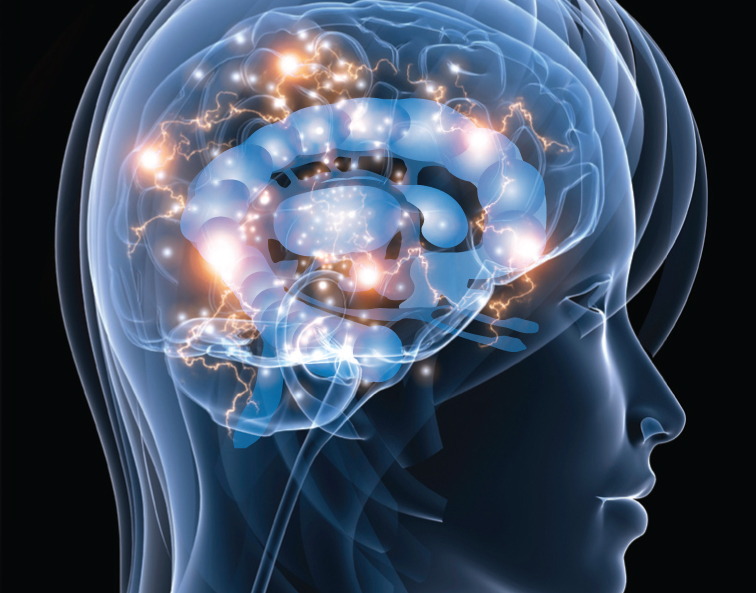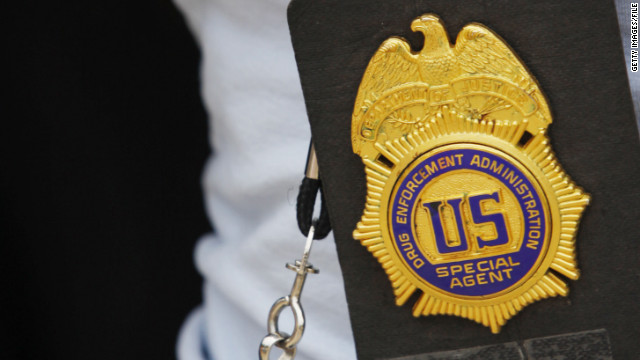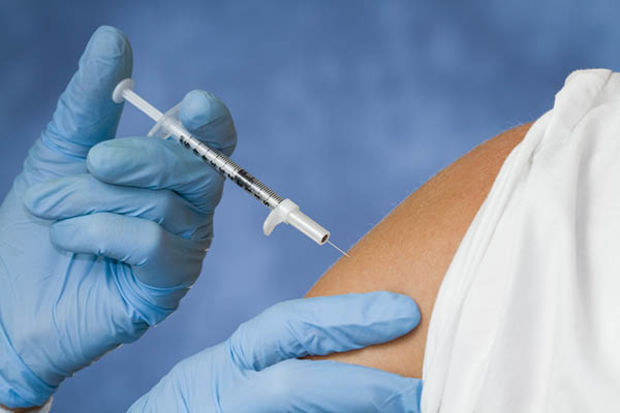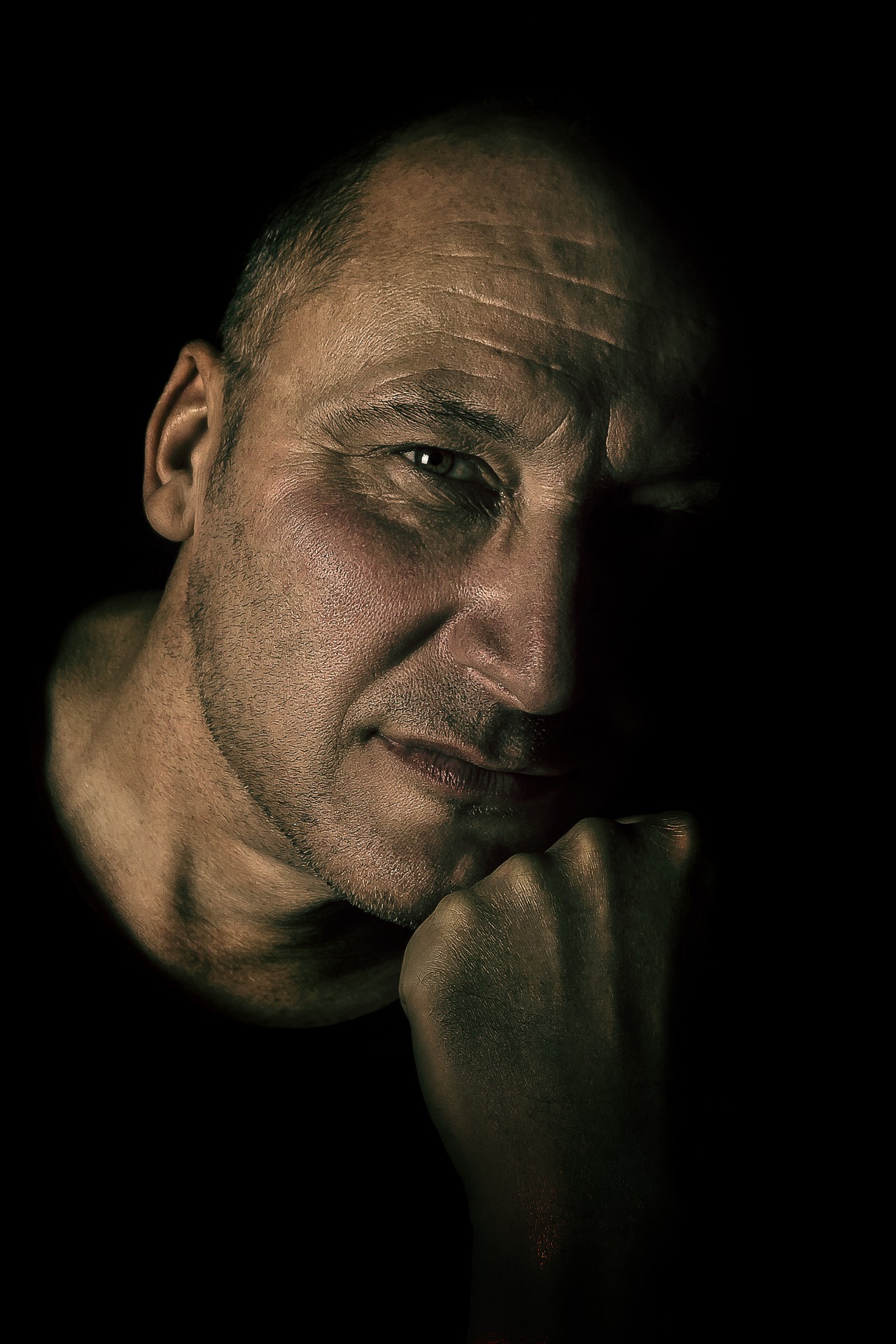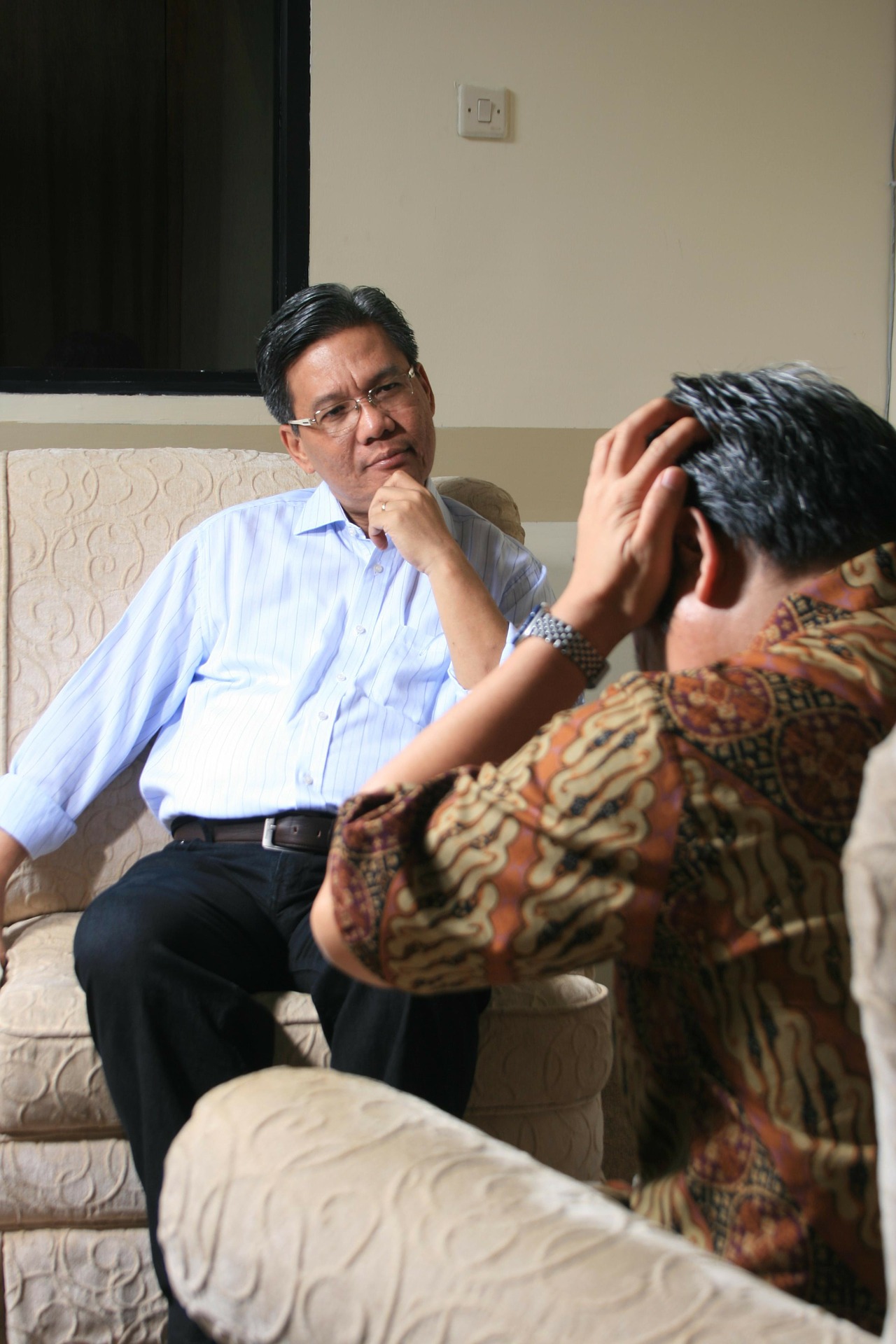Stimulants and narcotics are two different drug classes that cause contrasting effects and affect different cell receptors in the brain. There is some confusion over the difference between these two groups of drugs, but there are distinctive variations between them. If you require treatment for drug abuse or addiction, call 800-934-1582(Sponsored) immediately to find a rehab that’s right for you.
Stimulants vs. Narcotics
These two groups of drugs are very different, but they also do have some similarities. For one, the substances in both drug classes cause euphoria when abused, and there are both illicit and prescription medications in each class. Abuse of these two groups of drugs is very high, and many individuals even take them together to intensify the effects of each substance. However, abusing either type of drug in any instance is dangerous and can lead to addiction, deadly overdose, and a number of psychological and physical issues.
According to the National Institute on Drug Abuse, “As the name suggests, stimulants increase alertness, attention, and energy, as well as elevate blood pressure, heart rate, and respiration.” Stimulants are often abused to create a euphoric high or by those looking to enhance their performance, stay awake, or misuse their energizing effects. Narcotics act on different receptors in the brain and cause an almost reverse effect that includes pain relief, drowsiness, and a reduction in tension and anxiety.
Both these types of substances are dangerous when used without the permission of a doctor or in a way other than prescribed. Heroin, fentanyl, codeine, opium, and hydrocodone are all types of narcotics while cocaine, amphetamine, and methamphetamine are stimulant drugs.
Why is There Confusion?
The confusion surrounding these two drug types occurs for several reasons, one of which is the way the term “narcotics” is often used. Many people use this word to refer to all drugs and, specifically, all illicit drugs. Therefore, someone may call stimulants like cocaine and methamphetamine narcotics when the class itself does not actually contain these substances. The misuse of the word narcotics causes a great deal of this confusion.
Many people also do not realize these drugs cause differing effects. While they can both create euphoria, a person who takes stimulants frequently and in high doses will be likely to experience weight loss, psychosis, heart attack, psychological withdrawal symptoms, and severe cravings. Someone who abuses narcotics will be likely to experience constipation, severe respiratory depression, nausea, and more physical withdrawal symptoms (Drug Enforcement Administration).
Do Abusers of Both Drug Classes Require Treatment?
Yes. Any individual who abuses stimulants, narcotics, or both frequently and who has been doing so for a long period of time should seek out treatment as soon as possible. Either class can create addiction when a substance is abused for a long period of time, and deadly overdose can occur if the individual does not receive treatment quickly.
If you have been abusing harmful substances or you know someone who has, call 800-934-1582(Sponsored) now. We can help you find a treatment program in your area as well as answer any questions you may have about substance use disorders and their dangers.
If you are someone who consistently abuses prescription opioids, you are in danger of possibly becoming a heroin user. Seek treatment immediately by calling 800-934-1582(Sponsored) , and find a rehab center that will help you avoid this outcome as well as allow you to stop misusing prescription narcotics.
The Link Between Prescription Opioids and Heroin
It has been proven that a link exists between prescription opioid users and heroin abuse. According to the National Institute on Drug Abuse, “The recent trend of a switch from prescription opioids to heroin seen in some communities in our country alerts us to the complex issues surrounding opioid addiction.”
There are many reasons why individuals who once used prescription opioids like methadone, fentanyl, codeine, and oxycodone to get high move on to heroin abuse, including:
- Heroin is much cheaper to obtain in many communities. Those who want to get a cheap high often move to heroin because they can buy more of it and get high longer for less money.
- Heroin is also easier to get in many cases. Sometimes, the specific prescription drug of one’s choice cannot always be tracked down, and because of this, many people turn to heroin.
- The administration of heroin (which is usually either smoked or injected) causes an individual to feel the effects of the drug very quickly. With prescription pills, a person will have to crush the drug and inject or snort it, and it still takes longer for the high to take effect.
Am I in Danger of Heroin Abuse?
If you have been abusing prescription narcotics for a long time, there is a strong chance you may eventually turn to using heroin. As stated by the NIDA, “Nearly half of young people who inject heroin surveyed in three recent studies reported abusing prescription opioids before starting to use heroin.” But it is still important to analyze yourself and your path up until now. Ask yourself the questions below to find out if you are endangering yourself with your frequent opioid abuse.
- Do you abuse narcotics every day?
- Do you feel like you do not have control over your narcotic use?
- Have you considered using heroin because it is cheaper, easier to obtain, etc.?
- In the last year, have you
- Lost a job?
- Lost an important relationship?
- Been reprimanded or expelled from school?
- Been arrested?
- Experienced severe financial problems?
- Do you feel that, no matter how high of a dosage you take, you still do not experience the effects you once did from narcotics?
- Are you more preoccupied with getting high than with anything else?
If you answered yes to these questions, it is very likely that you may begin abusing heroin in place of prescription narcotics. This is a very dangerous change, and it is important that you seek treatment right away.
Even if your abuse has not become serious enough to create the kinds of problems listed above, it could still behoove you to attend treatment and make a change in your life now before things get worse.
Call 800-934-1582(Sponsored) now to find safe, reliable treatment options that will cater to your needs. We can also help you find centers that will take your insurance plan. Call today.
Addiction treatment is absolutely necessary once you realize that your narcotic abuse has become dangerous to you and is no longer within your control. Call 800-934-1582(Sponsored) to find rehab centers that will cater to your needs.
1. Overdose
If you have experienced an overdose on opioids, it is imperative that you seek addiction treatment right away. Not only does this illustrate the fact that you are unable to control your substance abuse, the National Institute on Drug Abuse states, “when abused, even a single large dose can cause severe respiratory depression and death,” a frequent result of overdose.
2. Withdrawal Symptoms
Those who are using narcotics as prescribed can often expect to experience withdrawal symptoms if they suddenly stop taking the drug, but individuals who abuse them will also undergo these symptoms after a while. Common withdrawal symptoms include: flu-like symptoms, sweating, depression, nausea, and pain.
3. Considering Heroin Use
Especially if you have been using prescription narcotics to get high and are considering switching to heroin because it is cheaper and easier to obtain, you should seek treatment immediately. Many individuals make this transition, which only causes more severe problems.
4. Cravings
Cravings are a strong sign of addiction and can be very severe. Someone who craves opioids will often be unable to quit on their own, as the cravings themselves will make this very difficult.
5. Making Excuses to Use Narcotics
Starting a sentence with “I need to take these drugs because…” is always a bad sign. If you notice you are making excuses for yourself to use narcotics more and more, you should seek treatment immediately, as you soon will find difficulty managing your use of them.
6. Tolerance
When you begin to notice the same amount of the drug you have been using no longer gets you high, this is called tolerance. Though it occurs when opioids are used regularly to treat pain, when they are abused, it goes hand-in-hand with addiction.
7. Secretive Behavior
If you are participating in “secretive behavior to hide drug use,” you obviously know what you are doing is dangerous and that the other people in your life would not approve, and you continue to do it anyway (National Library of Medicine). This is a dangerous sign.
8. Drug-seeking Behavior
Your behavior will start to change when you become addicted to a drug. You will often seek it out, even to your own detriment. Many people also break the law, stealing prescription pads to get narcotics illegally or taking money from loved ones.
9. Severe Life Problems
When you experience a severe problem in your life caused by your narcotic abuse such as:
- Getting arrested
- Losing your job
- Losing an important relationship
- Failing a test, failing out of school, getting expelled, etc.
- Experiencing financial troubles
and you still can’t quit, it is time to seek treatment.
10. No Control
The minute you start to feel like your drug abuse is out of your control, it probably is. It is important to seek treatment right away instead of waiting in order to ensure you get the help you need.
Find Treatment Now
Call 800-934-1582(Sponsored) to find safe and reliable treatment options. Our recovery experts can also help you find a program that will accept your insurance. Call now for assistance.
There are a number of treatment options that exist for narcotic addiction, more than for most drug classes. Below are some of the most common that are likely to be beneficial to you. For more information on narcotic addiction treatment or to find a rehab call 800-934-1582(Sponsored) .
1. Methadone Maintenance
Methadone maintenance is one of the most commonly used treatment programs for narcotic addiction. According to Harvard Medical School, “More than 100,000 American addicts” are currently being maintained on methadone. This program has been utilized since the 1960s to treat heroin and prescription opioid addicts safely and effectively.
The medication minimizes withdrawal symptoms, reduces cravings, and reestablishes normal brain functions. In the program, patients not only receive daily doses of methadone to minimize their withdrawal symptoms and cravings, they also receive access to other treatment options within the program as well as referrals to facilities that provide additional care. Many individuals thrive on methadone maintenance and stay in the program for months and even years.
2. Buprenorphine (and Naloxone)
Buprenorphine is a partial opioid agonist medication that works similarly to methadone but can be prescribed in a doctor’s office instead of a clinic. It is a newer option, but it has been found to be extremely effective for individuals with more mild physical dependencies. In the most often prescribed brand medication called Suboxone, naloxone is also present in order to minimize the chance of abuse, as it precipitates withdrawal in anyone who attempts to crush and snort the tablet.
3. Cognitive-behavioral Therapy
Cognitive-behavioral therapy is a therapeutic program that helps patients work through their addiction and learn better life skills. According to the National Institute on Drug Abuse, “Cognitive-behavioral strategies are based on the theory that in the development of maladaptive behavioral patterns like substance abuse, learning processes play a critical role.”
Patients learn how to better cope with stress and other issues that can lead to relapse, compare the positives and negatives of continued drug use, recognize triggers, and cope with cravings. This program is extremely beneficial for all types of substance abusers, including those who use narcotics.
4. Group Therapy
Group therapy provides the reinforcement one requires from their peers to create a better, safer life and to recover from addiction. It also helps individuals see their substance abuse more accurately through the trials of others like them. Group and individualized therapy are often utilized together to create a well-rounded treatment program.
5. NA and Other Support Groups
Narcotics Anonymous, SMART Recovery, and other support groups are commonly sought out by narcotic abusers who are still in treatment or transitioning out of rehab. These programs help individuals in recovery stay on the right path through social reinforcement of positive life choices, peer support, and discussion of recovery-based topics.
Often, a treatment program that uses several of these options is more beneficial to a narcotic addict than one that does not. Therapy and medication together have been found to create a full, effective program for addiction treatment and recovery. Addiction requires long-term treatment that addresses all aspects of the individual’s substance abuse and requires multiple stages throughout the person’s life. Call 800-934-1582(Sponsored) today to find a rehab center and to begin your journey of recovery.
Making a lifestyle change is a huge step in creating a better life and it is exciting! When a loved one or close acquaintance seems dead set against it, it can put quite the dapper on the new happiness.
According to Harvard Health Publications, making a healthy lifestyle change can affect the individual’s risk of disease, as well as overall health and the ability to live independently later in their lives. So how should someone deal with people who do not respect their lifestyle change?
Toxic People to your Lifestyle

Toxic people are controlling and manipulative, which can keep you from making a positive lifestyle change.
The phrase “toxic” is used a lot when someone puts a negative energy into the individual’s life out of disrespect. To some, toxic may mean that the person is difficult, annoying, demanding, or unpleasant but in general, these traits may just be undesirable.
Distance is not a bad idea with people who have these characteristics, but there is no urgent need to rid them from the life.
A toxic person is controlling and manipulative, will disregard boundaries, take but never give, play the victim card, don’t take responsibility and always assume they are right without remorse. These traits may not always be obvious to the individual until he or she take a moment to consider the person. In order to live a happy and healthy life, it is important to remove these people from it.
Why Remove Them?
It is rare that a toxic person will actually destroy a new lifestyle but they can slow the progress of it by being actively opposed to it. He or she can cause the individual to second-guess themselves on their important life decisions. To do this, he or she may make them feel upset, uncomfortable, and ashamed of the progress they have made for their well-being.
Understandably, toxic people can pass on some of their negative traits to the individual like a contagion. For example, in the work place, if the boss of the individual snaps at him or her, it can cause him or her to be irritable to the workers below or equal with them and so on. To keep the negativity from spreading, it would be a good idea to cut these people out of their lives.
How to Cut Them Out
It might not easy to cut out a toxic person from the individual’s life but it is crucial to remove them from their life in as healthy and as rational a way as possible. This is not always possible, but there are ways of removing them.
The first thing to do is to accept that it may be a process to get rid of them. If an explanation feels necessary, he or she should do it for himself or herself, not the toxic person. He or she can tell them how they feel in a firm way that lets them know there is not up for debate or keep it simple and simply state that they are not longer welcome.
It may take several tries to get them to go away, but it is imperative that he/she keep their distance as much as possible during the process. If you need suggestions regarding this process call 800-934-1582(Sponsored) .
Toxic people are usually known for their violent and belligerent behavior when they are riled. The individual should meet with them in public to avoid this from occurring and if things get heated, get up and leave. There is no need to argue with them, and if it comes down to it, he or she should restate their boundaries and make them realize that it is not a debate or negotiation, it is final.
Toxic people can make living a new lifestyle its own personal torment instead of excitement and it is important to know what the traits are. According to the University of Minnesota, lifestyle choices alone can become an essential component in lifting depression and relieving anxiety.
Toxic people can have the opposite and far more negative effects on the individuals and should be steadfastly removed in order to obtain the new lifestyle. If the individual becomes nervous, he or she can always write a letter to help them decide what to say.
If you want to find counseling for yourself or the toxic person in your life, give us a call at 800-934-1582(Sponsored) and an associate will help you.
No one disagrees that narcotics addiction is an increasing problem in the United States. There are thousands of cases of death due accidental overdose, intentional overdose, and drug related accidents every day. According to the Centers for Disease Control, opioid use and overdose have reached epidemic proportions.
This epidemic is mostly perpetuated by the over use of prescription opioids but many of them are also due to illegal narcotics such as heroin.
Narcotics that People are Likely to Overdose on
There are a variety of narcotics that people are likely to overdose on. These narcotics come from a variety of sources including illegal drug dealers, doctors, pharmacies, and thefts. The most common narcotics that people overdose on are:
- Methadone – methadone is relatively easy to overdose on both intentionally and accidently. Since methadone interacts with many other drugs and alcohol, any respiratory depressant can cause an accidental overdose.
- Oxycodone – also known as OxyCotin is a prescription painkiller that is highly addictive. Oxycodone is implicated in both accidental overdose and intentional suicide. Like methadone, it is also easy to mix it with other drugs or alcohol and send yourself in respiratory arrest.
- Hydrocodone – hydrocodone is a scaled down version of oxycodone but just as deadly. Any respiratory depressant taken with high doses of this drug can easily cause an overdose.
- Heroin – heroin is an illegal opiate made from the opium poppy. People inject, snort, or smoke heroin to get high. This imprecise dosing makes overdosing on it easier than other drugs to overdose on.
If you are addicted to any of these drugs, you need to get help as soon as possible. Overdose is not the only danger that these drugs carry. If you have a problem then call 800-934-1582(Sponsored) . We can help you find the treatment that you need before you become another overdose statistic.
Deaths Related to Narcotics Use or Abuse
Aside from the epidemic of overdoses from narcotics abuse or addiction, there are a number of deaths related to narcotics that are not technically overdoses. A few of these are:
- Secondary infections – due to high risk behaviors narcotics addicts contract deadly diseases such as bacterial infections, hepatitis, and AIDS,
- Driving related deaths – driving while on high doses of narcotics can easily cause a fatal accident,
- Other accidental deaths – people who are on narcotics do not feel pain. Many deaths that are not strictly attributed to narcotics happen because of this lack of pain. It is easy to fall and seriously injure yourself when you cannot feel how badly you are injured.
Finding Treatment for Narcotics Addiction
There are many other reasons why the Centers for Disease Control is now calling prescription and nonprescription narcotics use an epidemic.
The rising rates of use and risks associated with that use are apparent to anyone who studies the statistics. Narcotics have one of the fastest rising addiction rates in the United States. This is why if you are addicted to a narcotic, it is important to seek treatment now. For a treatment center near you call 800-934-1582(Sponsored) .
Narcotics addiction is one of the most prevalent addictions in today’s society. Between illegal narcotics and those prescribed by doctors, this addiction has become an epidemic in the United States.
According to the National Institute on Drug Abuse, there are two major categories of treatments for narcotics addiction. There are pharmacotherapies and behavioral therapies. Each of these therapies are designed to work both together and independently depending on the individual and the situation.
Pharmacotherapies
A combination of medication and behavioral therapy is considered most effective for addiction treatment.
Pharmacotherapies are therapies using drugs to either maintain pain control while treating the addiction or by treating the symptoms of withdrawal using medications. The majority of the people who use narcotics fall into the former category. The most common ways to treat narcotics addictions are using:
Methadone
Methadone is a opioids agonist that blocks the opioids receptors in the brain. When it blocks them it keeps the person from feeling the euphoric affects of the opiates, while maintaining pain control. People who use methadone need to take it daily in order to keep from going into withdrawal. Methadone is only dispensed by certified doctors in licensed clinics. Although methadone is safe when taken as directed, it can be dangerous if you drink or do other drugs while taking it.
Suboxone
Suboxone in similar to methadone in that it blocks the action of the opiates on the brain. It is not as dangerous as methadone when it comes to taking other drugs with it. Suboxone is used for the same purposes as methadone but is not known to control pain as well as methadone treatments do.
If you are addicted to narcotics and want medication to treat withdrawal or withdrawal and chronic pain, we can help. Call 800-934-1582(Sponsored) , we can assist you in finding the treatment center you need to get off narcotics once and for all.
Behavioral Therapies
Behavioral therapies are forms of behavioral modifications and what people traditionally think of as therapy. There are quite a few behavioral therapies known to help people with a narcotics addiction. A few of these therapies are:
- Cognitive Behavioral Therapy – uses learning techniques and thought process training to discover the cause of the addiction and modify it.
- Family Behavioral Therapy – uses family counseling and stress management techniques to modify addictive behavior and reduce stress.
- Motivational Therapy – this is intensive therapy that motivates a person to change on their own after the first few sessions.
- Community Reinforcement Therapy – this therapy is close to social recovery theory, the addict is motivated by improving their situation so the desire and original cause of the drug use is no longer present.
- Contingency Management Therapy – this type of therapy offers rewards for change, sometimes the rewards are tangible such as vouchers for goods and services and other times they are intangible.
- 12 Step Therapy – 12 step therapy is a somewhat controversial therapy that involves addicts helping other addicts change their behaviors.
How to Find Treatment for Narcotics Addiction
You can find a treatment center for narcotics addiction simply by calling 800-934-1582(Sponsored) . We can help you find the treatment that you need before the addiction gets out of control.
The world of addiction treatments is vast one; It seems as if everyone has an answer to your addiction problems. Unfortunately, this is not exactly true.
There are however, several treatments that the National Institute on Drug Abuse has proven effective.
Counseling
Counseling should be a part of most drug treatment programs. There are many types of counseling available that can be specifically tailored to narcotics addiction. Some of these types are:
- cognitive behavioral therapy
- motivational therapy
- contingency management
- peer therapy
- group counseling
- dialectized behavioral therapy
Therapists use different approaches depending on the patient that they are working with. Patient personality plays a large role in which type of therapy that a person needs.
Medication
Medication is one way that doctors use to manage both the symptoms of withdrawal and the cause of the addiction. There are two main types of medication therapies that are common with narcotics addiction.
Medication Maintenance
Medication maintenance is a long term drug therapy. Medication maintenance is almost always used to treat both addiction and chronic pain. The medications given work to keep the person from withdrawal and treats patients who are in chronic pain due to:
- arthritis
- fibromyalgia
- chronic back injuries
- sciatica
- chronic nerve pain
Medication maintenance allows the patient to be both pain and narcotic free. If you are interested in medication maintenance treatment for your addiction call us at 800-934-1582(Sponsored) . We can help you find the treatment you need before it is too late.
Medication Tapering
Medication tapering is designed to stop the withdrawal that people go through when they first stop taking narcotics. Narcotics withdrawal is intense and ultimately leads to relapse. When a doctor prescribes a medication for the withdrawal, they will gradually taper it off until you are no longer on the drug.
If you have already started withdrawal and feel you might relapse, we can help. Call us at 800-934-1582(Sponsored) and we can assist you in finding a treatment center that uses medication tapering or medication maintenance to end a narcotics addiction.
Alternative Treatments
Many treatment centers are now using alternative treatments to help with narcotics addiction. Alternative treatments work well for those who have tried other methods and failed. Sometimes alternative treatments work alongside standard treatments and other times doctors use only alternative treatments. A few of the most common alternative treatments are:
- meditation
- guided meditation
- herbal therapies
- relaxation techniques
- hypnosis and hypnotherapy
- pet and equine therapy
- massage
Alternative treatments also sometimes include eastern medicine and eastern philosophies on treatment both addiction and the mental illness that usually comes along with it.
Holistic Treatment
In holistic treatment centers believe in treating the whole person. They help you improve your mind, body, and spirit. Instead of just treating the addiction they help you find balance in your life. They help you correct your family relationships, your mental health, and your spiritual health in order to take the desire to drugs away
How to Find Treatment
To find any of these treatments simply call us at 800-934-1582(Sponsored) . We can find you the treatment you need to end your addiction to narcotics once and for all.
Drug addiction can have a far reaching affect that goes well beyond the addicted person. There is a negative impact on the family members and friends, as well as within the community. By far, those who are most negatively affected by drug addiction are the family unit and all those who are a part of it.
Upsets Normality

Family members may begin to isolate themselves from one another as a way to cope with the addiction.
When someone develops an addiction, their entire way of life shifts. For a family, the addiction greatly upsets the lives and dynamics of every member. The addiction will often take center stage and in many cases, the lives of the family will be as focused on the addiction as the addicted person is.
Most of the time, there is a disruption of the family unit’s social, psychological, emotional, and even physical health. Socially, the family may isolate themselves from each other and from their community as they confront the addiction.
They may no longer trust their addicted loved one, and may begin to adjust their thinking and become suspicious of others. Addiction can be an emotional rollercoaster and can emotionally overload everyone in the family.
The stress of dealing with the situation can cause physical issues and inadvertently create more problems, causing an endless cycle of stress.
Disrupts Responsibilities
Addiction is defined by the NIDA as a chronic and compulsive disease where the person has complete and absolute focus on their addiction. It is sadly quite common for everything else in the person’s life to become secondary to the addiction, including their family.
Any responsibilities that the addicted person has to themselves and to their family often is forgotten. It can be gradual, forgetting or postponing little things. Eventually, they could stop showing up at family gatherings, going to work—which can be a big issue if they are the primary earner in the household—and even stop coming home.
At some point, the person’s responsibilities become a problem for the rest of their family, who will often take over for things to get done or to prevent those from outside of the family from finding out about the addiction.
The Blame Game
The NIDA stresses that there are a lot of causes that can impact the development of a drug addiction, but there is never any one person to blame. It is rather unfortunate that addiction usually causes people to try and find someone who is at fault.
Both those within and outside of the person’s family will blame those closest to the addict for not doing something to stop the addiction from forming or from getting as bad as it did. Sometimes, the family members will blame themselves for not noticing what was going on sooner.
This can create a hostile environment within the family unit and generate potentially severe damage on the relationship between the family members and the addict.
If you or a loved one has an addiction, please contact us through our website or call us at 800-934-1582(Sponsored) to speak with one of our caring specialists about your treatment and recovery options.
Opioid addiction treatment has come a long way to grow into the incredibly safe and effective program available today. While each individual needs to receive their own treatment program that caters to their specific needs, it is important to be aware of the safest options available for narcotic addiction treatment and how these can be implemented into a full rehab and recovery program. If you need immediate help finding a rehab center in your area, call 800-934-1582(Sponsored) today.
Medications Used in Narcotic Addiction Treatment
According to the Substance Abuse and Mental Health Services Administration, “Methadone has been used for decades to treat people who are addicted to heroin and narcotic pain medicines. When taken as prescribed, it is safe and effective.” Even though methadone can be addictive when abused, many individuals are able to take the drug safely because of the maintenance program’s intensive regulations.
Buprenorphine is a safe medication for narcotic addiction rehab, especially when it is prescribed with naloxone to protect an individual from abusing it. However, it is not always the most effective medication for those who require higher doses of medication to treat their severe withdrawal symptoms. Buprenorphine is safest when used to treat those with milder dependencies on narcotics.
Naltrexone can be safe when used as prescribed, but many individuals give up on the medication because of its side effects. This makes the drug difficult to prescribe to a large population of narcotic addicts and, in some ways, less of a generally safe option for treatment.
Using medications to treat narcotic addiction does often make the process safer for the individual because they will not experience severe cravings, withdrawal symptoms, and other issues associated with recovery. All three commonly used medications have their own risks, but the safest option for addicts is usually either buprenorphine or methadone taken exactly as prescribed.
Behavioral Therapies Used in Narcotic Addiction Treatment
It is important to stress that “counseling and other behavioral therapies are the most commonly used forms of treatment,” according to the National Institute on Drug Abuse. This is partially because these therapies have been found to be effective for nearly every type of addiction but also because they are extremely safe and carry no side effects in the way pharmacological options do. Cognitive-behavioral therapy, contingency management, motivational enhancement, family, couples, and group therapy are all safe and effective options for narcotic addiction treatment that usually only require the individual to find a counselor with whom they feel comfortable to be successful.
What are the Safest Treatment Options for Narcotic Addicts?
The safest method of treatment for narcotic abusers is to choose a balance of behavioral therapy and medication that allows you to focus on your recovery, learn new coping techniques, and begin to change the way you think about your substance use.
Even though certain specific options are safer than others when side effects and other issues are considered, your program should reflect your needs specifically in order to be beneficial to you.
Call 800-934-1582(Sponsored) today if you would like to find out more about opioid addiction treatment or find a rehab center.




